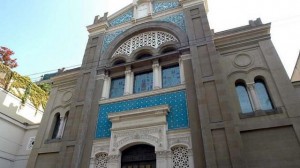FEATURES Milan, a Diverse Jewish Community
It is time for celebrations for the Jewish Community of Milan. The year 2016 marks the 150th anniversary since its foundation. The following article is the second installment of a two-part series devoted to the history and present life of the Community.
After Second World War, the Jewish community of Milan found its way back to life thanks to hard work and the arrival of new immigrants from many countries, most of which were Arab. People came from Libya, Egypt, Syria, Iraq, Lebanon, Turkey and Iran, forming a Community featuring a variety of ethnic groups, commonly referred to as edot – something unique in Italy.
“Milan is the most international reality among Italian Jewish Communities, and because of this it is somehow more like Israel than to the rest of Europe,” Milan’s chief rabbi Alfonso Arbib told Pagine Ebraiche. The Italian Jewish paper reached out to some of the people that guided the kehillah through the most recent part of its history.
It is not always easy to deal with, but “Milan’s “inhomogeneity”, given the presence of the different edot – Arbib added – is also its greatest richness.”
After the Liberation, with most of the buildings destroyed, the institutions of the Jewish Community found venues in different parts of the city. Soon the school reopened and emigration to British Palestine went on thanks to the activity of the Jewish Brigade. In 1953 the renovation works in the Central Synagogue in via della Guastalla were completed, and in 1964 a new big building in via Sally Mayer – in what is today Milan’s Jewish neighborhood, but at the time was still almost countryside – was ready to house the school. A synagogue, the offices of the Centre for Contemporary Jewish Documentation (CDEC) and B’nai B’rith headquarters still operate in an older building in via Eupili.
The school has thus become one of the top priorities for the leaders of the Community. “I am not interested in politics. I did my duty to welcome local and national authorities, but I’ve always preferred engaging for the school and the future of the Keihillah”, said Roberto Jarach, former president of the Community and today vice-president of the Union of Italian Jewish Communities (UCEI).
Jarach served as a leader delegated to the school for ten years and he recalled, “I took part in reforming the high school in 1987 and my presence in the institute was daily”.
From 2000 the school could also count on the help of a Foundation created by Cobi Benatoff, former president of the Community, and current member of UCEI board, to fundraise. “I think keeping the school running is an absolute priority, Benatoff said, because our history shows that this is the way to ensure the continuity of our Community.”
1987 was an important date also because of the signature of the agreement between the Italian State and the Union of Italian Jewish Communities, which from that moment on has had its own statute. “Before the agreement everything was different,” said professor Giorgio Sacerdoti, who was president of Milan Jewish Community at that time (and is now UCEI board member). “When I was elected in 1982, he remembered, I still needed approval from Milan’s Prefect.”
And today? “Today we are less religious and more keen on looking for cultural events outside the Community,” sociologist of CDEC Betti Guetta said, analyzing the landmark survey on Italian Jewish Communities by professor Enzo Campelli, which was published in 2012. This is why, according to Guetta, “the Community’s marketing will have to be very energetic.”

